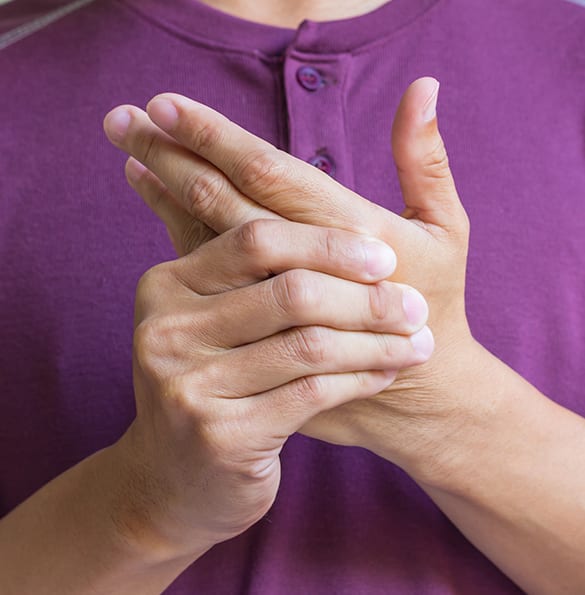
Get relief from Carpal Tunnel Syndrome with the help of LA Orthopedic Group.
Carpal tunnel syndrome is the result of pressure or compression of the median nerve that controls feeling and movement in the thumb and first three fingers of the hand. The median nerve extends from the forearm to the hand and runs through a small space in the wrist known as the carpal tunnel.
- Inflammation or repetitive use can make the carpal tunnel smaller and increase pressure on the median nerve
- Early treatment can prevent permanent damage
CONTACT US TODAY
Common Causes of Carpal Tunnel Syndrome
Carpal tunnel syndrome is often associated with repetitive wrist movements, especially when the wrist is repeatedly bent in a downward position. Other factors associated with an increased risk of median nerve damage and carpal tunnel syndrome include:
- Anatomical factors, such as trauma or arthritis, that decrease the size of the carpal tunnel
- Fluid retention related to pregnancy or menopause
- Chronic illnesses, including diabetes, rheumatoid arthritis, and hypothyroidism, that can cause nerve damage and inflammation
- Obesity
Symptoms
The most common symptoms of carpal tunnel syndrome are numbness, tingling, and weakness in the thumb and first three fingers of the hand. The little finger is served by a different nerve, so it is not affected. The sensation may feel similar to an electric shock and may travel the length of the forearm. The tingling and numbness are typically most noticeable when trying to grip items, such as a pen or a steering wheel, or when trying to sleep. In the initial stages, it may be possible to relieve the discomfort by shaking the hands and wrists, but the sensation may become constant without treatment.


Diagnosing Carpal Tunnel Syndrome
Anyone experiencing persistent symptoms of carpal tunnel syndrome should consult a physician, especially if the symptoms interfere with sleep or normal activities. To rule out other conditions that can produce similar symptoms, the doctor will obtain a history of your symptoms and activities. During the physical exam, the doctor will test the muscle strength and nerve sensation in your hands by guiding you through certain movements to see if they induce carpal tunnel symptoms. X-rays, laboratory tests, electromyograms, and nerve conduction studies may be used to evaluate nerve and muscle function and to rule out other causes of wrist pain and inflammation.
Treatments for Carpal Tunnel Syndrome
Early treatment of carpal tunnel syndrome can help prevent permanent nerve damage. Mild symptoms can usually be managed with conservative treatments, including rest, using ice and over-the-counter medications to reduce inflammation, and wearing a wrist splint while sleeping to relieve pressure on the nerve. In extreme cases that do not respond to conservative treatment, surgery may be necessary. The procedure, known as a carpal tunnel release, involves cutting the ligament that is impinging on the median nerve.




